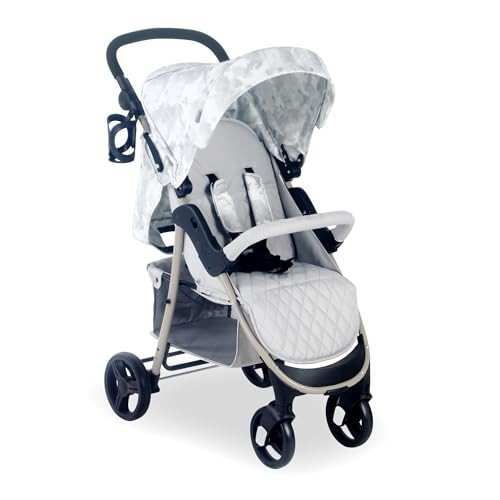Understanding Pushchairs and Prams: A Comprehensive Guide
When it comes to baby mobility, the terms "pushchair" and "pram" are typically used interchangeably. Nevertheless, they represent distinct types of baby providers, each engineered for specific stages of a child's advancement and differed parental requirements. This article explores the vital distinctions between pushchairs and prams, their features, types, and factors to consider for brand-new moms and dads.
What is a Pushchair?
A pushchair, typically understood as a stroller in some regions, is created for kids who can stay up separately. Generally, advice here are contemporary, lightweight, and have a seat that can be reclined for added convenience. They may also include a five-point harness to guarantee the kid's security while on the go.
Secret Features of Pushchairs
- Light-weight Design: Most pushchairs are made from lighter products, making them easy to maneuver and transport.
- Adjustable Seats: Many designs offer recline options, dealing with resting or active positions.
- Canopy: Most pushchairs come geared up with a sunshade or canopy to protect the kid from sun exposure.
- Storage Space: They typically consist of a lower storage basket, perfect for holding diaper bags or shopping.
Common Types of Pushchairs
- Requirement Pushchairs: Traditional options appropriate for kids who can sit individually.
- Umbrella Strollers: Lightweight, compact, and simple to fold; suitable for taking a trip.
- All-Terrain Strollers: Built with bigger wheels for off-road capabilities and smooth rides on diverse surfaces.
- Travel Systems: Combines a stroller and a baby car seat, enabling parents to move their child flawlessly.
What is a Pram?
A pram, brief for "perambulator," is mostly created for babies, generally from birth till around six months. Prams are structured with a flat lying position that supports a newborn's anatomy, guaranteeing they are cradled properly.
Key Features of Prams
- Flat Bed Design: Prams have a totally flat bed, which is important for young babies who need to lie flat for convenience and health.
- Stylish Aesthetics: Many prams boast vintage or classic designs, frequently seen with elegant fabrics and attractive surfaces.
- Suspension System: Quality prams typically consist of a suspension system to supply a smoother ride over rough surface.
- Extended Canopy: Extended sun protection and rain covers are typical.
Common Types of Prams
- Timeless Prams: Featuring a standard style, these are often styled to stimulate fond memories.
- Convertible Prams: These can rapidly change from a pram to a pushchair and usually grow with the child.
- Light-weight Prams: More compact than conventional prams, making them easier to transfer.
Distinctions Between Pushchairs and Prams
| Feature | Pushchair | Pram |
|---|---|---|
| Use Case | For kids who can stay up | For newborns and infants |
| Design | Upright seat with reclining alternative | Flat bed for lying down |
| Weight | Typically lighter | Heavier due to durable construction |
| Compactness | Folds easily and compactly | May be bulkier, depending upon style |
| Age Range | 6 months to 4 years or older | Birth to around 6 months |
| Rate Range | More affordable options offered | Frequently more expensive due to materials and style |
Picking Between a Pushchair and Pram
When selecting between a pushchair and a pram, several factors require consideration:
- Age of the Child: Newborns require a pram; older babies and young children will be more comfy in a pushchair.
- Lifestyle Needs: Parents who travel typically may prefer lightweight pushchairs, while those looking for convenience in style might favor prams.
- Budget plan: Prams can range from reasonably to expensive; trustworthy pushchairs can accommodate budget-conscious shoppers.
- Storage Space: Consider how quickly the selected model can fit in your cars and truck trunk or home storage.
FAQs
Q1: Can I utilize a pushchair for a newborn baby?
While certain pushchairs are developed with reclining functions that may accommodate babies, it is usually advised to utilize a pram or specially developed infant automobile seat for newborns.
Q2: Are travel systems worth the investment?
Travel systems can provide benefit by integrating a car seat and a stroller. They permit smooth shift from cars and truck to stroller, which many moms and dads discover indispensable.
Q3: How do I preserve my pushchair or pram?
Routinely tidy the fabric, look for mechanical issues, and oil the wheels. Make sure to follow specific care directions offered by the manufacturer.
Q4: What is the weight limit for pushchairs and prams?
Weight limits vary by design: typically, pushchairs accommodate up to 50 pounds, while prams fit babies approximately 30 pounds. Always refer to the maker's guidelines.
Q5: Is it essential to have a rain cover for my pushchair or pram?
Yes, a rain cover can safeguard your kid from rain and wind, keeping comfort while avoiding moist clothes.
In summary, pushchairs and prams serve important however distinct functions in the movement landscape for moms and dads and caretakers. Choosing the best design depends upon the child's age, lifestyle requirements, and family preferences. By understanding the characteristics, advantages, and differences in between pushchairs and prams, parents can make educated choices that guarantee comfort and safety for their kid. Whether strolling through the park or navigating hectic streets, the perfect movement service is out there waiting.

